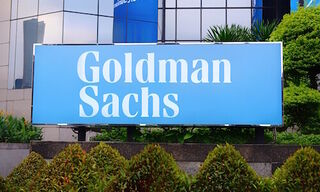Investors Only Willing to Pay One Basis Point to Save the World
An award-winning Hong Kong study analyzes the price premium between green and conventional bonds and comes up with a big nada. finews.asia takes a look.
The situation could not be starker. According to US meteorologists, the average temperature worldwide at the start of last week exceeded 17 degrees Celsius. Based on the initial measurements («sciencealert/AFP»), both Monday and Tuesday were the hottest days on Earth since records began.
Still, it won’t faze investors much. In fact, the entire suite of global net zero targets leaves them as cold as a hapless Hong Kong bank office employee sitting in a climate-controlled office set at a seemingly near-permanent 12 degrees.
Even though climate change has been uncontested dogma for decades in Switzerland, many often forget that much of the rest of the world does not have the same sense of urgency, even in the face of a growing body of evidence.
EAERE 2023 Award
The same apparently holds true when it comes to green bonds. That, at least, appears to be the main conclusion in a Hong Kong research study that won this year’s Award for Outstanding Publication by the European Association of Environmental and Resource Economists (EAERE).
The paper, written by four HKMA economists, took a close look at the price premium, or the so-called «greenium», investors are willing to pay for green bonds over conventional bonds. Their pithy conclusion in the leading sentence of the report?
«Sadly, not much.»
Little Difference
That is because the premium they found was only 1 basis point.
«The main message of the research is that on the issue of fighting climate change, people aren’t really willing to put money where their mouths are,» said Alfred Wong, a retired HKMA economist who led the study.
But, first, let’s take a step back. The only difference between green bonds and conventional bonds is the way the proceeds are used. And, as the name indicates, green bonds are used to fund eco-friendly projects or plans that target environmental and climate benefits.
Making Comparisons
However, issuers rarely issue a green bond and a conventional bond at the same time and with the same features such as the issuing size and maturity date. In the study, the authors, therefore, estimated the greenium by comparing the yield of a green bond and that of two matching conventional bonds from the same issuer with similar features.
They started by compiling a database with more than 6,000 green bonds with a face value of $767 billion from 50 economies.
After that, they came up with a population of 267 sample triplets covering 18 currencies, a significantly higher number than previous studies had come up with.
Lagging Financials
In the four sectors sampled, they then discovered that financials and government-supranationals had the «smallest» greeniums compared to the discretionary consumer and industrial sectors.
«First, investing in green bonds issued by financials and government/supranationals may be subject to a greater risk of greenwashing. As money is fungible, it is easier for financials or governments/supranationals than, for example, for industrials to use green bond proceeds to fund the green projects that would be funded anyway,» the report stated.
«The wider implication of the study is that if the authorities concerned really want the bond market to help channel funds to help conserve the environment, they must deal with the problem of greenwashing,» said Alfred Wong.
Independent Certification
But all is not lost. The study also ascertained that green bonds that are certified by independent third parties, such as the Climate Bonds Initiative (CBI), had a «much larger» idiosyncratic greenium than those that weren’t.
«This lends support to a growing demand for independent assessment of the greenness of green bonds due to the risk of greenwashing,» the report indicated.
Moreover, there is even some light on the horizon. The market for green bonds has become more liquid in recent years when compared with traditional fixed income, with average deal size increasing and more of them being listed on exchanges or as components in exchange-traded funds.
Willing HNWs
When it came to figuring out why investors are not willing to pay more, they cited the feedback of other market participants, noting the comments made by California’s treasurer John Chiang in 2017 that fund managers were not willing to accept lower returns for green bonds while a select number of high-net-worth individuals were.
That would seem to imply that private banks and wealth managers would do well to ensure that they keep a certain number of allotments on the product shelf where and when they can.
Otherwise, the more generalized market feedback was that both institutional investors and retail investors are «generally unwilling» to leave financial returns on the table to save the environment.
A Big Stretch
So where does that leave things?
It seems clear that the financial markets, and the finance industry, will not singlehandedly save our planet anytime soon. And maybe it is a bit much of a stretch to expect them to.
«The fact that the green bond market exists and continues to enjoy unparalleled popularity itself is perhaps the best testimony to the financial instrument being valued by investors and issuers», the study concluded.
























